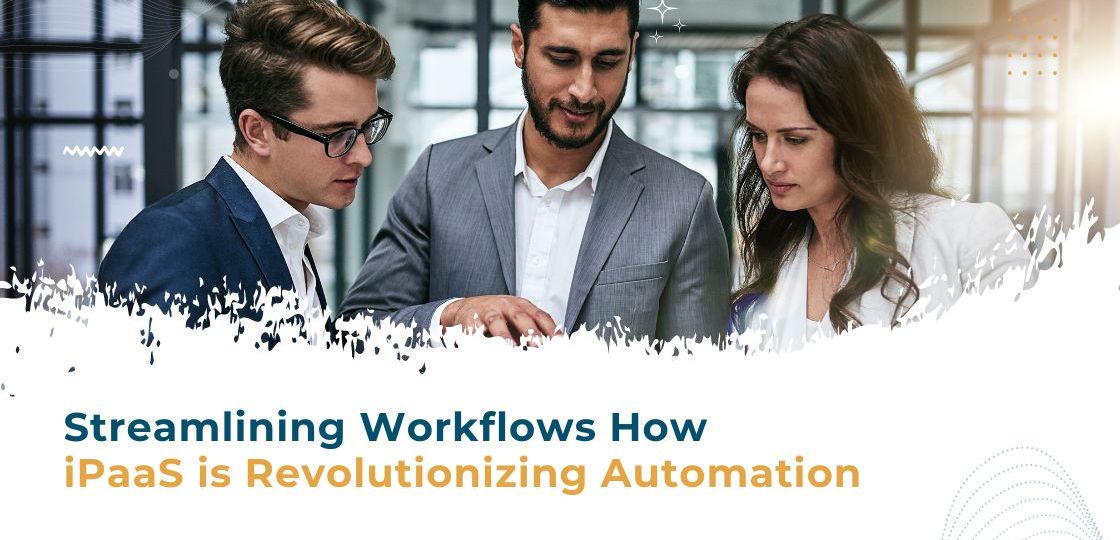
Workflows are central to how businesses operate, sharing information and connecting activities across teams, systems & functions. In the digital age, companies need help interconnecting and streamlining ever-increasing critical workflows. Low manual tasks, system issues that create bottlenecks, and data differences between systems must be digitalized, synchronized, and harmonized.
A new generation of agile integration software now makes it much easier to tackle these workflow issues.
This article explores how iPaaS is revolutionizing workflow automation through its capabilities for:
- Connecting Disparate Systems
- Automating Manual Processes
- Orchestrating End-to-End Workflows
- Delivering transparency & accountability
What is iPaaS?
Integration Platform as a Service (iPaaS) describes a cloud-based approach for seamlessly connecting software applications to replace disparate systems via applications prebuilt ready to integration by API and pre-formatted templates. With the heavy lifting of connectivity and data movement handled automatically in the background, iPaaS liberates organizations to build & customize automated, scalable workflows spanning virtually all business systems and data sources. The impacts on efficiency and visibility are truly transformational.
Challenges with Traditional Workflows
Before exploring automation capabilities, it’s worth highlighting why traditional workflows demand a new approach in the first place. Common pain points include:
- Siloed Applications and Data: Valuable data, insights and context sit trapped in siloed departmental systems, unable to interconnect easily. This requires tedious manual transfers.
- Manual Tasks and Data Manipulation: Everyday repetitive tasks like data entry, cleansing and validation eat valuable resources and consume too much time. Data must be manually reformatted across different systems.
- Data Discrepancies: With data living in siloed systems, there is no single source of truth. Reporting suffers from discrepancies and stale data.
- Lack of Holistic Visibility: Departmental views cannot provide end-to-end workflow transparency for true process optimization.
The Solution: iPaaS Workflow Automation Capabilities
iPaaS solutions transform workflows through built-in automation coupled with simple cloud-based connectivity across once-disparate platforms. Pre-defined triggers actively keep data synchronized, while automated tasks reduce manual efforts.
Connecting Disparate Systems
The core value proposition of iPaaS solutions is seamless connectivity. Prebuilt connectors, APIs and templates accelerate tying together even highly complex application environments across cloud and on-prem systems.
With iPaaS delivering a unified workflow integration fabric, data accessibility barriers dissipate. The free flow of data between platforms also minimizes discrepancies and latency by keeping information synchronized.
Automating Manual Processes
By applying triggers, mappings, and business logic across interconnected systems, iPaaS solutions enable step-by-step workflow task automation.
Tedious manual and repetitive processes are eliminated. The movement of data between systems or departments automatically initiates associated required tasks like data validation, cleansing, reformatting and analysis. Errors are minimized and employees avoid repetitive work.
Orchestrating End-to-End Workflows
With the ability to apply process automation across all systems with digital workflows, iPaaS solutions can orchestrate truly comprehensive business processes from end to end. Seamless automation across sales, marketing, operations, finance and more becomes readily achievable.
With comprehensive visibility and interconnected control capabilities, optimization potential also heightens dramatically across the digitized workflows. Teams gain instant holistic data to identify high-impact enhancements instead of just isolated local fixes.
Choosing the Right iPaaS for Your Workflows
With an iPaaS there is clear potential for transforming workflows, many new providers have flooded the space with solutions of varying depth and capability. Determining which iPaaS represents the best fit requires clear analysis based on factors like:
iPaaS Architecture
Assess foundational elements like cloud infrastructure scale, storage capabilities, throughput capacities, redundancy and security protocols. These determine scalability potential and workflow capacity parameters.
Prebuilt Connectors and APIs
What set of common enterprise applications and niche industry tools can the iPaaS integrate out-of-the-box? More prebuilt connectivity accelerates work.
Ease of Use
Does the platform enable simple drag-and-drop workflow building or complex coding? Can citizen integrators map connections across systems intuitively? Simpler and more visually engaging platforms mean faster deployments.
The Future with iPaaS
As today’s leader in workflow integration, automation and orchestration, iPaaS marks a profound evolution in streamlining business processes. The solutions to once-entrenched inefficiencies have arrived – in cloud-based, pre-integrated and simplified form. Seamless system connectivity and step-by-step workflow automation, at last, provide a path for escaping workflow paralysis to unlock productivity and performance. An agile workflow future has dawned.
